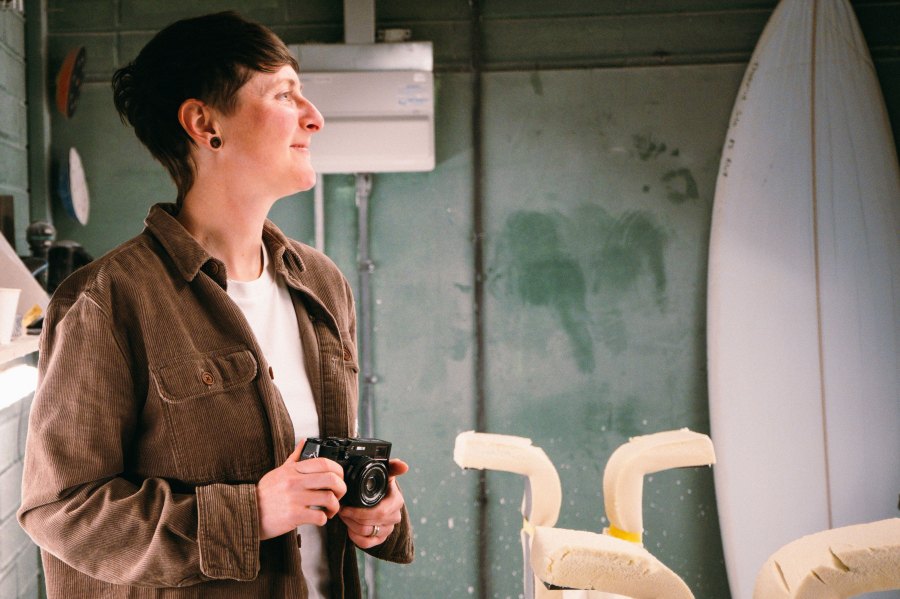Since 2018, I have embraced Fujifilm X-Series cameras as my go-to choice for photography, after seeking a more manageable alternative to the bulky DSLR gear I used to carry around with me. Once I’d seen a friend using the Fujifilm X-T1 on the beach one day, the allure of how intuitive the Fujifilm X-Series cameras were really captivated me. This led me from the Fujifilm X-T2 through to the Fujifilm X-T3, and now, my primary body, one of the best Fujifilm cameras, the Fujifilm X-T5.
Along the way, I’ve delved into the realm of medium format with the GFX series, broadening my creative horizons along the way. As amazing as these cameras are, though, it was still the X Series that worked best for me, for their portability, weight and just general ease-of-use for both my daily work and personal projects.
Fujifilm X100VI – at a glance:
- 40.2MP APS-C X-Trans CMOS 5 HR sensor
- Fixed 35mm equivalent f/2 lens
- In-Body Image Stabilisation – 6 stops (5-axis)
- Hybrid optical / electronic viewfinder
- Two-way tilting touchscreen
- 6.2K 30p, 4K 60p, and 1080 240p video
- Available in silver or black
After growing up capturing moments through a small film camera, I’ve been shooting for around 15 years, honing my craft almost daily. Two years ago, I quit the stability of my 9-to-5 job to pursue my photography career. I shoot pretty much daily either for myself or my clients, and I thought it would be a great idea to create a project solely using the X100VI.
I have been thoroughly exploring the capabilities of this camera. Each moment behind the lens has expanded my photography journey in unexpected ways, while investigating the hype that’s been built around this camera. I mean, if you haven’t been exposed to the hype around it, where have you even been?
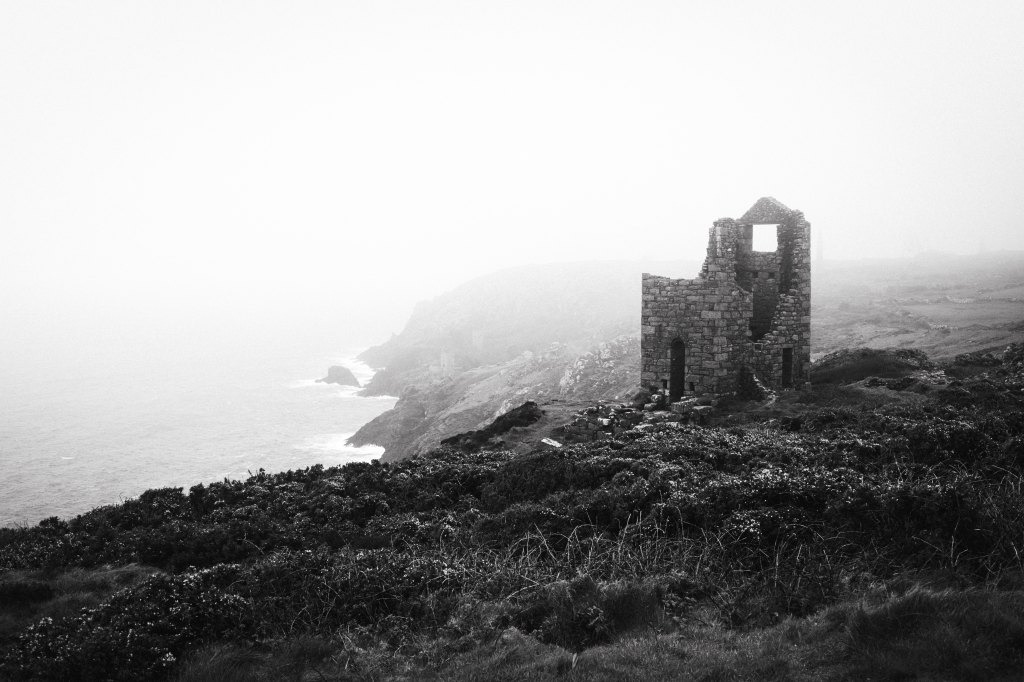
As for what I’m shooting most days, I’d class myself as an ‘outdoor photographer’, I’m but unable to put a label on any specific genre as such. I’m a multi-genre photographer and it means I was able to put this camera to the test in a few scenarios with different subject matter. I’m mostly shooting anything in or around the sea, however with no waterproof housing available, going in the sea was out of bounds (on this occasion anyway).
With a plan to explore Cornwall on the horizon, I seized the opportunity to truly test the capabilities of the X100VI and see if it lived up to my expectations! I had an idea around putting together a short project, where I could have a focus yet also test the camera in different scenarios. So I engaged in a collaboration with a surfer and board shaper for the project, documenting their journey from crafting the board to riding the waves. Again, noting that I made the commitment to rely solely on the X100VI camera, with all the pros and cons of using one camera, one focal length!
Along the way, every day, I also immersed myself in diverse scenes and scenarios, aiming to grasp a comprehensive insight into the camera’s compatibility with my vision guiding the way. I’m excited to share how it went. Again, I must stress that the following is my biased perspective detailing my personal experiences during this field test with the X100VI.
Fujifilm X100VI – Documenting the Surfboard Shaping
First up, I made plans online to meet with Ollie from Cooper Surfboards at his unit for board shaping. I’d never met Ollie before, so I am super grateful that he trusted my vision for the project, as without him it wouldn’t have been possible! I carefully selected this particular project because I am deeply drawn by my feelings and emotions into the tools that define my work and artistic process.
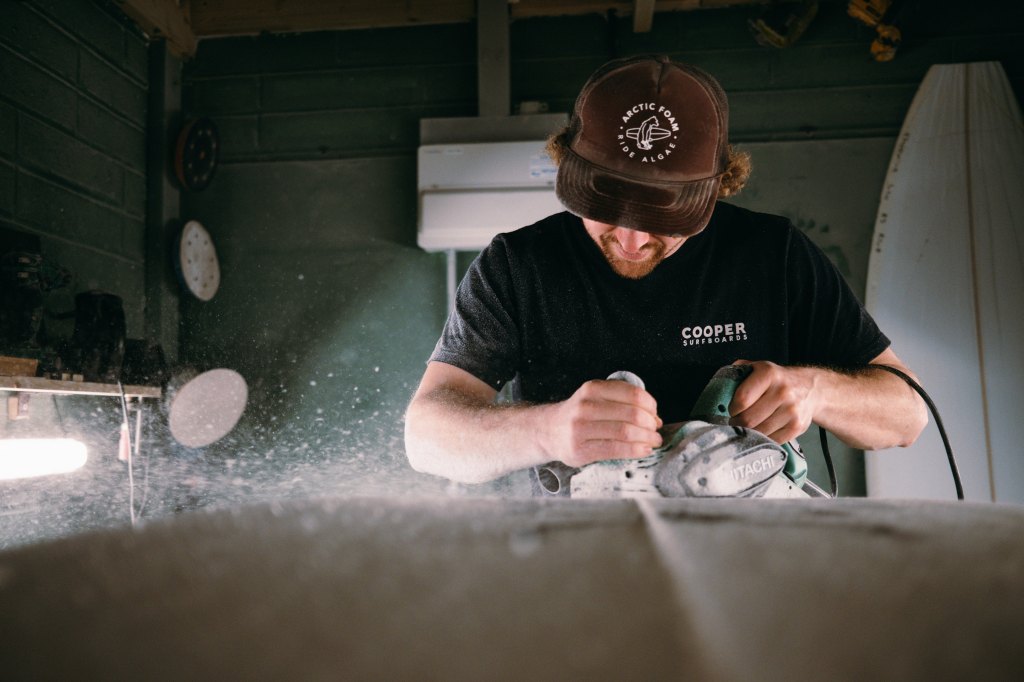
I’m not very technically minded, and therefore everything I use must simply work as an extension of me to capture my creative vision. The tools with which I capture images must not only establish a profound connection and evoke genuine emotion with me, but also through my images to share with my viewers, clients or subjects. Just as a surfboard is an essential extension of a surfer, from the way it feels to how it performs in the waves, mirroring how I feel about the camera seamlessly merging with my being.
So, let’s get onto using the actual camera and my first impressions! Upon my initial experience, I was captivated by the camera’s timeless and retro design, as well as its beautiful attention to detail. Less is definitely more when it comes to these designs. I absolutely love the look of the camera and how it feels in my hand. It’s small, lightweight and discreet.

For the first stage of this project, I was documenting Ollie shaping the surfboard, taking the foam from its bare basics into something that resembles the surf boards we are familiar with. I am always seeking out interesting angles and perspectives in anything I photograph, so my approach to this was no different. I am used to shooting with full manual controls, but I decided to make the most of this camera and took some time to look through all the settings and functions available.
Going into the shoot, I had configured custom settings to establish the ideal combination of shutter speed, aperture, and auto ISO (which I capped at ISO 800), all while utilising the camera’s eye-tracking feature. I capped the ISO at 800 because there was some beautiful side lighting and I didn’t want the camera pushing the exposure up. I wanted the light and dark areas maintained and felt this was a good level to work with.

With its rapid autofocus and advanced eye-tracking and subject recognition capabilities, which use AI for face and eye detection, the X100VI made it perfectly easy for me to take my mind off the camera and focus purely on the creativity. It’s worth noting here that straightaway these upgrades over the X100V are an incredibly useful addition.
We were working in a small space and as mentioned I was looking for an interesting angle, and this has to be the most unobtrusive camera I’ve ever had the pleasure of using! With its tilting screen combined with the tracking functions, I could get low to the subject and work with some very interesting angles. My mind was purely focused on the art and creating atmosphere for my images.
I love to work with as much creativity as I can and I pushed it down to a slow shutter speed, something that I love to experiment with! My settings for the shoot were mostly around 1/500sec at f/2.0 and ISO 800. However, I stopped the aperture down to f/11 and set the shutter speed to around ¼sec, pushing the camera to see what I could create with the movement of Ollie sanding the boards. This truly put a part of me into the images I captured and had me feeling excited for the results!
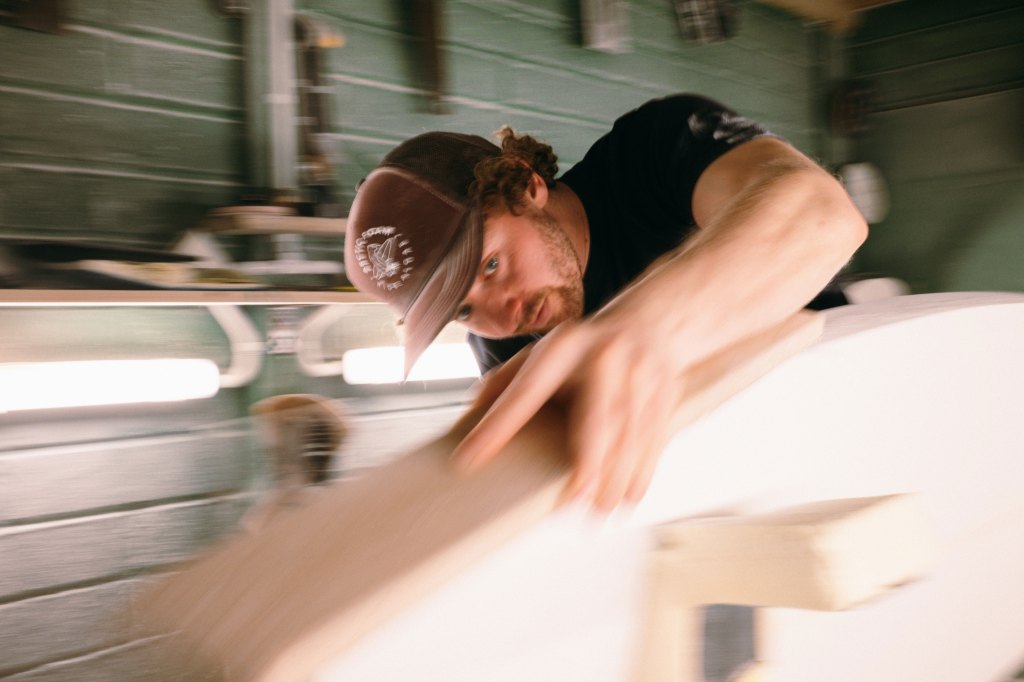
The tracking worked pretty well in some cases where I’d kept the camera still, but Ollie was moving, and in some cases I was panning with the movement. Sometimes tracking was working and sometimes not, but either way didn’t really affect the outcome I was looking for here.
The whole process of board shaping takes much longer, from the shaping to the colouring and applying the resin seal. However, we spent a few hours working together and I felt I’d not only gained a great insight into how a surfer creates their tool for surfing, but I’d created a set of images to encompass this. I have to say the X100VI excelled in this area of the shoot.
I was sold on the hype here, what a beautiful camera! But we had another part of the shoot to come, and I knew it would be a very different approach, and this is where the real challenge would lie.
Fujifilm X100VI – Surfing
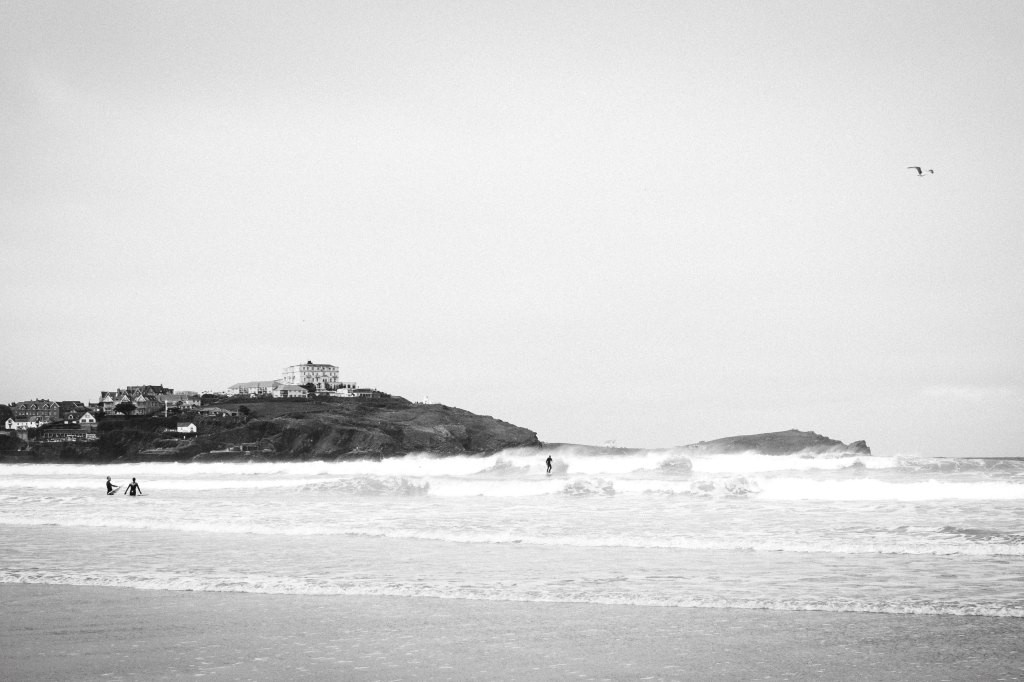
With Newquay being renowned for its surf, beautiful beaches and powerful waves, we made a plan to head out when the forecast was looking good. Met with breath-taking views, the X100VI captured the scene beautifully. The camera excelled when capturing portraits, landscapes, and scenes unfolding around me by allowing me to immerse myself in my surroundings: observing the waves, connecting with the moment, and feeling the essence of the environment. All of the reasons I love photography!

However, the bit where I knew this camera would face its biggest challenge in the entire project was when focusing on shooting the surf itself. Quite simply, the X100VI’s fixed focal length of 23mm (equivalent to 35mm on full frame) posed a huge problem. Despite the convenience of the crop modes accessible through a simple turn of the focus ring, I found myself massively limited by the lack of zoom reach.
While the 35mm, 50mm, and 70mm settings provided some flexibility, they proved insufficient in keeping up with Ollie’s movements within the surf, highlighting this as the most challenging aspect of the entire project. I barely managed anything while he was out in the water and was feeling really disappointed in being unable to photograph the surf as I’d wanted.
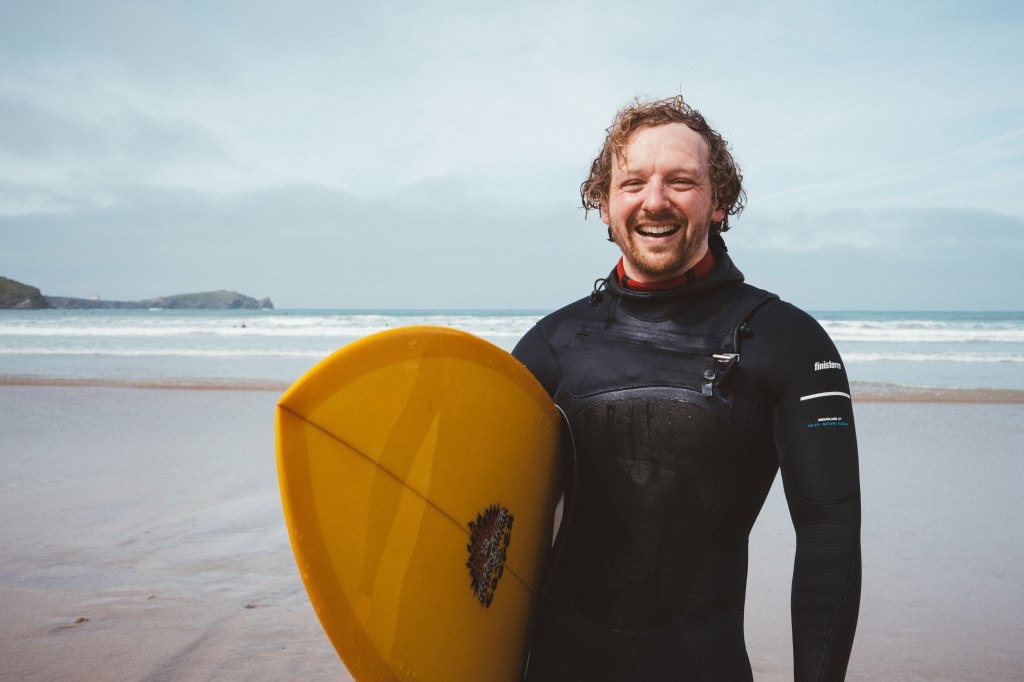
However, at this point I needed to remind myself that I knew this would be an issue. I wasn’t naïve about it, I was completely aware the fixed focal length wouldn’t work here, and I had to work as best I could with the camera. I had chosen to approach things in this way to test the camera for all its glory and flaws along the way.
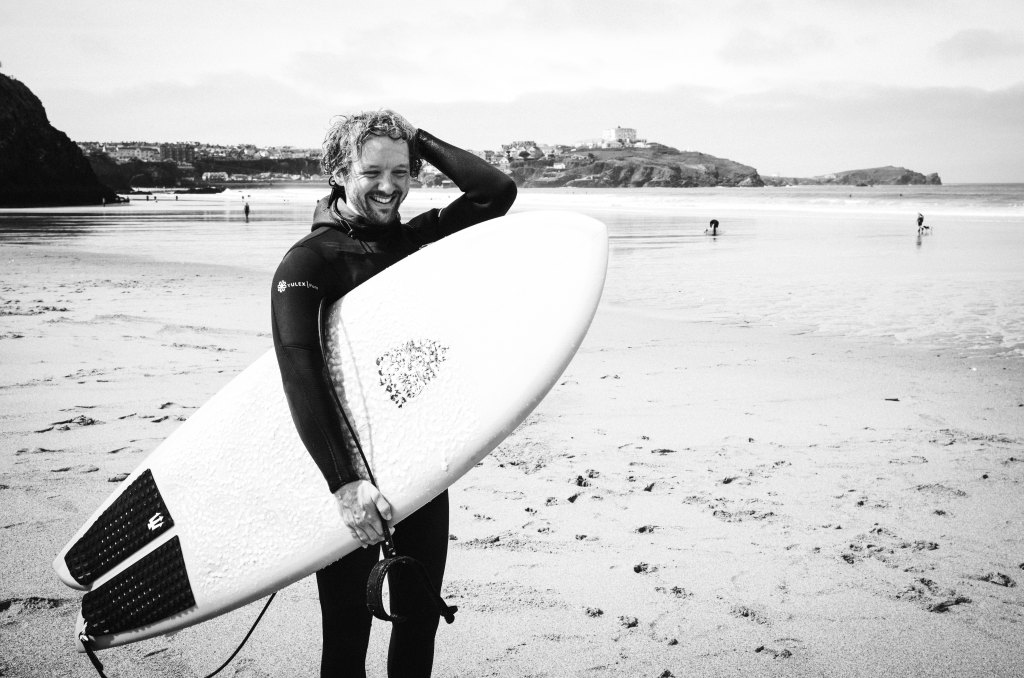
With a change of mindset, I began using the camera for all its advantages, documenting the scene and the lifestyle of the surf becoming apparent all around me. I was able to discreetly use this unobtrusive camera in the way it was meant to be used, documenting moments as they unfolded. Once again this is where the camera excelled and I got some fantastic portraits of Ollie with his board, as well as the moments of the scene along the way.
Fujifilm X100VI – Daily Shooting
In between the times I spent on this project, I really wanted to put this camera to the test for other subjects to explore its versatility. I have to say that thanks to the convenience of the latest smartphones, sometimes we might wonder about the necessity of carrying a camera for grabbing snapshots of our daily lives. How many of us are quick to grab our phones when it comes to capturing those daily moments?
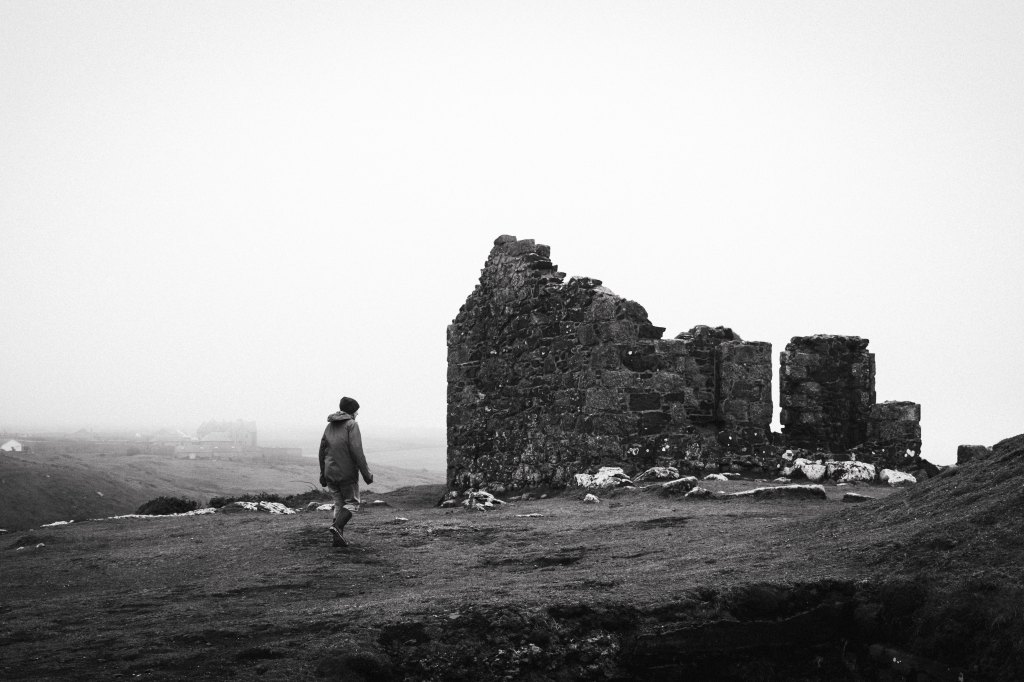
While using a phone is definitely easy and convenient, personally, I find that it can sometimes detract from the emotional and intentional aspect of photography. For me, using a camera feels more mindful and deliberate. So in view of this, I also made it my mission to capture moments purely on the X100VI during my time in Cornwall.
The joy of traveling light with a camera that easily slips into my coat pocket but also captures such wonderful detail is unmatched. I’ve had this in my pocket when going on hikes, really taking in the atmosphere of a foggy landscape across Cornwall. I’ve also captured close-up details of the spring flowers emerging, and more importantly, portraits of my dog Buster in my van!

It was fairly low light in the van, so it was nice to slow the shutter but remain hand-held and sharp thanks to the IBIS. As with the face and eye tracking, the subject detection AI worked incredibly well when photographing my dog and farm cat Toby. It allowed a level of reliability to step back from the technical aspects and just thoroughly enjoy using the camera.
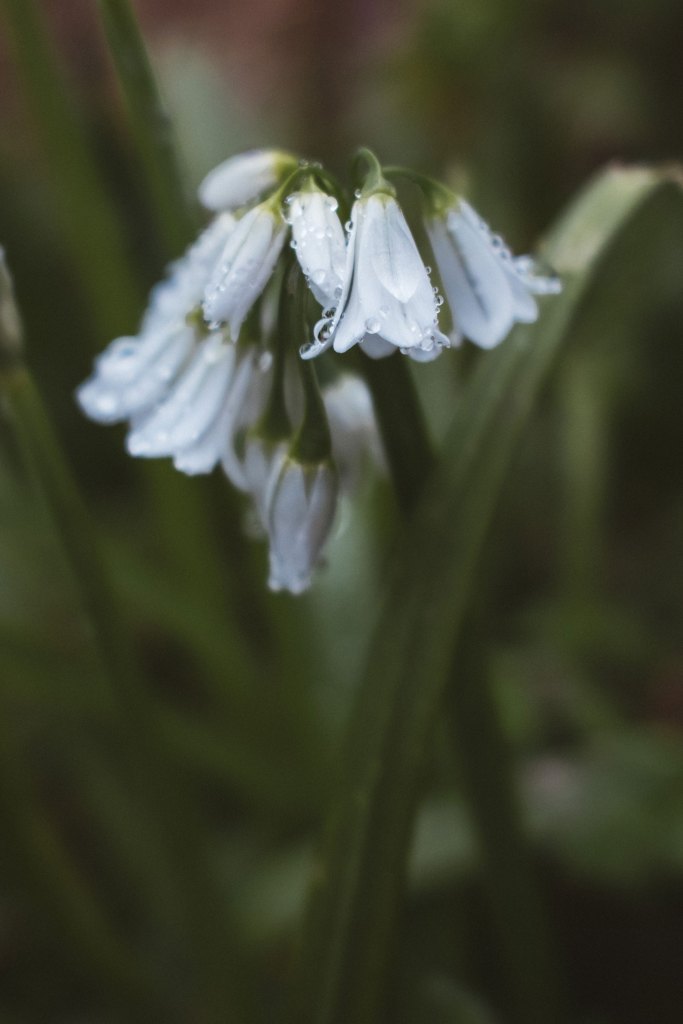
Fujifilm X100VI – Overall Image Quality
From all the shooting I did with this camera, no matter the subject, one thing that stood out for me, aside from the fun of using it, was the overall image quality. When importing my files into Lightroom and bringing them up ready to edit, the first thing that stood out was how detailed and sharp the images were, just so beautifully crisp. Of course, Fujifilm are renowned for their colour quality so this goes without saying – but worth noting this was no different! There is a fantastic quality to the files and a wonderful richness to the tones.
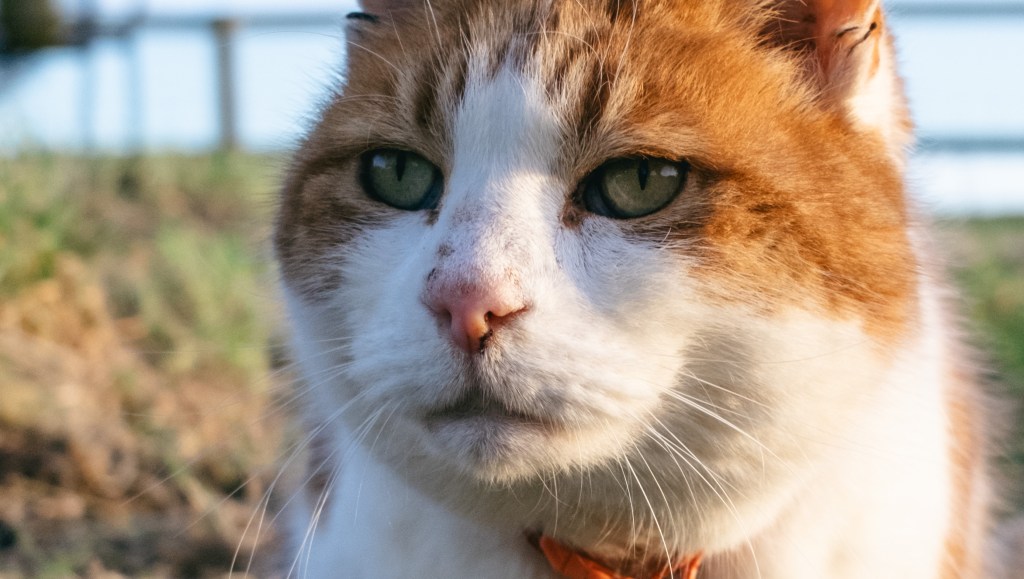
Comparing it to my X-T5 and the standard I’m used to, it was right up there and met my expectations. I prefer to shoot in raw and to retain as much detail in the files as possible, and then apply my own pre-sets in post-production. However, that being said, the built-in film simulations are so much fun and do provide some classic, great looks to the images – especially if your preference is to shoot in JPEG.
Fujifilm X100VI – Summary
In summary, this camera has been an absolute pleasure to use. I’ve thoroughly enjoyed the perspective for getting up close and getting the interesting angles during my surfboard shaping project, along with using it in my daily life. It’s been a pleasure to carry around and feels like a wonderfully intuitive bit of kit when in your hand.
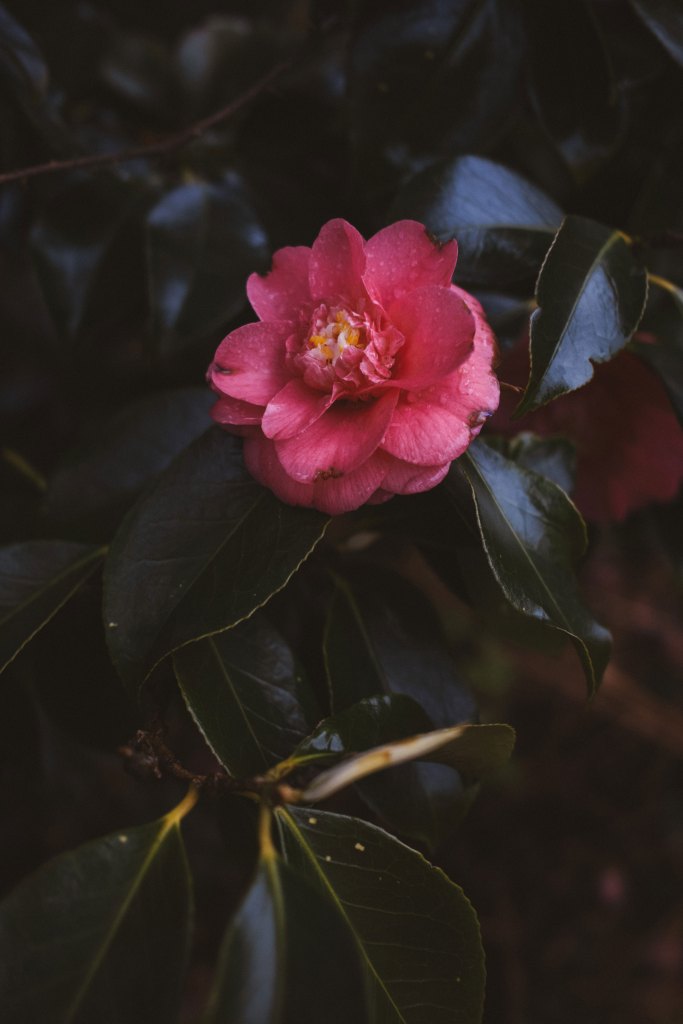
However, there’s no doubt it comes with its drawbacks and restrictions – but I’ve enjoyed the challenge this presented to me too! Fixed focal-length lenses offer both advantages and limitations. While they require more movement to find the right shot, they encourage closer engagement with subjects and surroundings. I can fully see why these characteristics appeal to travel, street, and documentary photographers seeking authentic and unobtrusive interactions with their environments.
However, the focal length presented huge challenges for me during the surf photography, where reach is essential. Crop modes can partially alleviate this issue, but are still not quite enough. Despite the widespread acclaim and hype of the X100VI, I wouldn’t say it’s universally suitable for all photographers, as it cannot capture every type of subject matter.
I take my cameras out in all conditions, and while the good news is that the body of the camera is weather sealed, you have to purchase a weather sealing kit to protect the lens.
Focusing on the strengths of the X100VI, though, it does perform exceptionally well in the scenarios it was built for. There is no denying that the camera is ideal for documenting travel and street scenes, due to the unobtrusive style. The upgrades from the X100V that were most welcome in my eyes were the 40MP resolution, IBIS being able to slow down shutter speeds but continue shooting hand-held, and the AI subject detection.
I’ll be sticking with my X-T5 for the interchangeable lenses, but this camera really does stack up otherwise! When reminiscing about my time in Cornwall, the moments captured on camera where portability and convenience came into play has definitely enhanced our memories.
Emily’s work can be found online at emilyendeanphotography.co.uk and on Instagram @emily_endean_photography
Related reading:
- Fujifilm X100V and X100VI Alternatives? Best retro cameras
- Fujifilm X100V vs Fujifilm X100VI comparison – key differences explored
- Read our full Fujifilm X100VI Review
Follow AP on Facebook, Twitter, Instagram, YouTube and TikTok.

